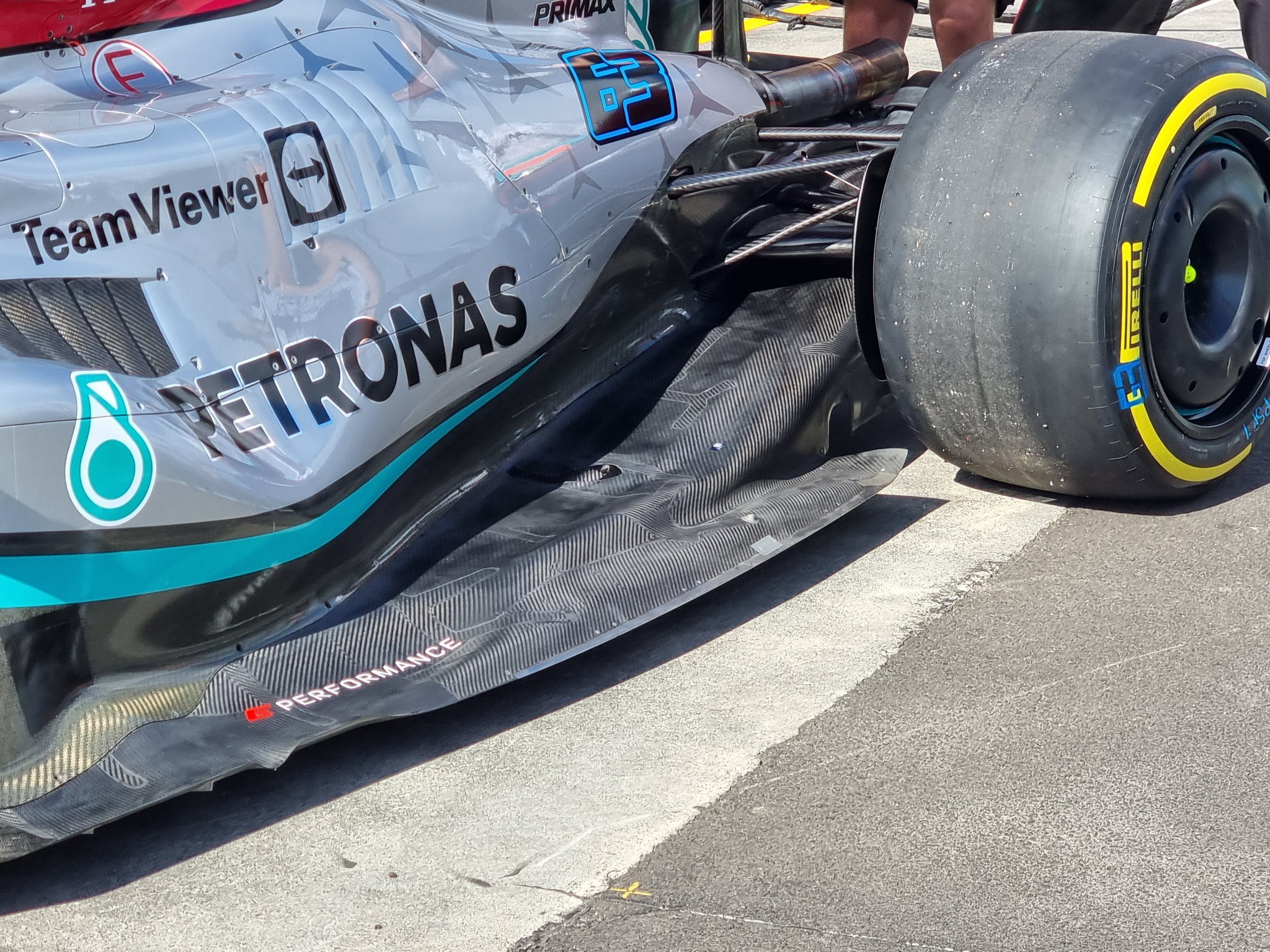What would be interesting to know is, how much the suspension rule changes have hurt Mercedes.dialtone wrote: ↑06 Apr 2022, 19:11As I said it already in this thread in the past, in my opinion any commentary that assumes Merc isn't smart, or hasn't thought of something obvious, is likely wrong or simplifying the problem too much. It should be obvious to assume that a team that won 8 WCCs in a row is stacked, so starting with this assumption, if it's taking them this long to figure it out, they are either solving a different problem than what people here are thinking or the problem isn't so trivial to solve for them.AA_2019 wrote: ↑06 Apr 2022, 18:49
Err… they did try a harder suspension in pre season tests but it made it undrivable, pretty sure they needed more than 20 mins to test and figure that out or else they would not have wasted valuable testing time
The lower downforce rear wing will help to reduce purposing, then they can run the car lower to make up the loss of downforce and then they go back to the same level of purposing tolerance but with less drag. That should have taken them 20 mins to figure out during the pre season test, but clearly didn’t
And making the car undrivable by using a harder suspension is not a solution, maybe the compromises they chose don't allow for that, unlike other cars which instead have been able to deal with it that way, with slightly higher ride height.
https://www.formula1.com/en/latest/arti ... 4bp8j.html
Also now banned are:
“Any form of ride height control or alteration via self-levelling systems or feedback loops.” This would seem to outlaw the Mercedes rear suspension’s ability last year to set to a lower ride height once the downforce at higher speeds had pressed the car down past a set threshold. This is what allowed the car to maintain its dramatic diffuser stall for enhanced straightline speed.
“Any variation of ride height caused by the suspension geometry’s kinematics and the tyre shape must not exceed 3mm over the range of steering lock.” This has limited how far the front suspension can be lowered past a threshold of steering lock, giving the car more downforce on low-speed corners, an innovation introduced by Ferrari in 2018 but since widely copied.
“Any storing of energy via any means for delayed deployment and/or any suspension system that would result in a non-incidental asymmetry (e.g. hysteresis, time dependency, etc.) in the response to changes in load applied to the wheels.” This outlaws any system which prevents the suspension loads being transferred in a linear way and would include the inerter but is not limited to that.
It will be interesting in particular to see how Mercedes have reacted to this set of limitations, as their front suspension has long featured the unique ‘interconnected double-almond’ anti-roll bar arrangement.
It may be that this will still be permissible, depending upon whether there is any asymmetry in the way the roll bar articulates and whether that varies according to how sudden the cornering loads are. It may have been possible previously to engineer this system so that a sudden steering input would sit the car down on the outside-rear and with appropriate valving in the damper allow the inside front to lighten or lift, and thus help it glide over the kerbs without upsetting the car.
If that is how the Mercedes system was operating, it would also now be headed off by the following wording of the regulations.
“Hysteresis is acceptable in an element providing it is at an incidental level and no attempt is made to utilise any inherent hysteresis to alter the response of the element relative to its primary purpose. Links may be used to actuate the suspension elements that are mounted remotely from the rockers but cannot be used to circumvent or subvert the requirement of Article 10.2.6. Such links must be rigid and of minimal mass and design so as to achieve the linking mechanism.”



